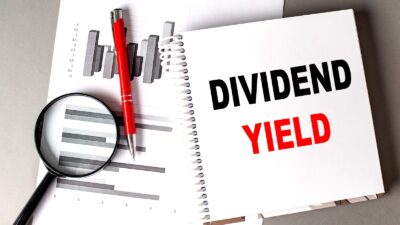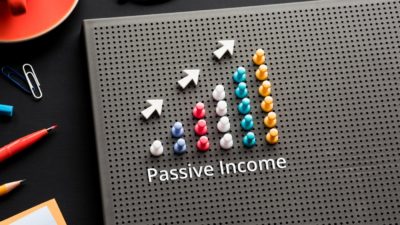It’s very likely that interest rates will start to fall later this summer. From the current base rate of 5.25%, the market’s expecting a cut in August (or September at the latest).
The dividend yields in the stock market are related to interest rate movements. Thus, I’m expecting yields to also fall in the coming year. So here’s what I can do to try and protect my second income from dividends.
A couple of ideas
A stock’s dividend yield is calculated by using its current share price and the dividend per share from the past year. I can’t predict exactly what the future dividend per share will be. But I can buy the stock and lock in the share price cost.
Let’s say a company pays out the same dividend over the next year. If I purchase the stock now, the yield will be the same in the coming year.
But if I decide to hold off and the share price increases over the next year, the dividend yield will fall. This has happened to me in the past and I still rue some of my missed oppourtunites!
What about if I already own a stock that I think could suffer if interest rates fall? In that case, I’d try and iron clad my income now by hedging my bets.
What this means in practice is to look for a stock that should do well with falling interest rates. Then if my existing holding cuts the dividend, I’ll be protected as the new stock should keep paying it. In fact, it could increase the payment if it does well.
An example right now
For example, I currently own shares in Barclays. However, lower interest rates could make the bank less profitable, which could cause the dividend per share to drop.
As a result, I’m thinking about buying the Urban Logistics REIT (LSE:SHED). This FTSE 250 stock has a dividend yield of 6.38%.
I think lower interest rates should help to make the company more profitable. This is because the real-estate investment trust (REIT) has to finance new acquisitions and the existing portfolio via some loans. The lower the interest rate, the cheaper a new loan would be.
Please note that tax treatment depends on the individual circumstances of each client and may be subject to change in future. The content in this article is provided for information purposes only. It is not intended to be, neither does it constitute, any form of tax advice.
Further, lower interest rates will help to ease pressure on tenants that lease out the properties. The industrial and logistics properties are home to some consumer-facing businesses. If customers spend more as they feel more confident with lower interest rates, it ultimately does help the REIT. Through higher profitability, I’d expect the dividend per share to increase.
The risk is that the benefit to the company takes a long time to filter through. After all, the tenants aren’t going to get an instant boost from any interest rate cut.
Ultimately, I’m seriously thinking about buying shares in the REIT to help hedge against the potential of my dividend income falling.








